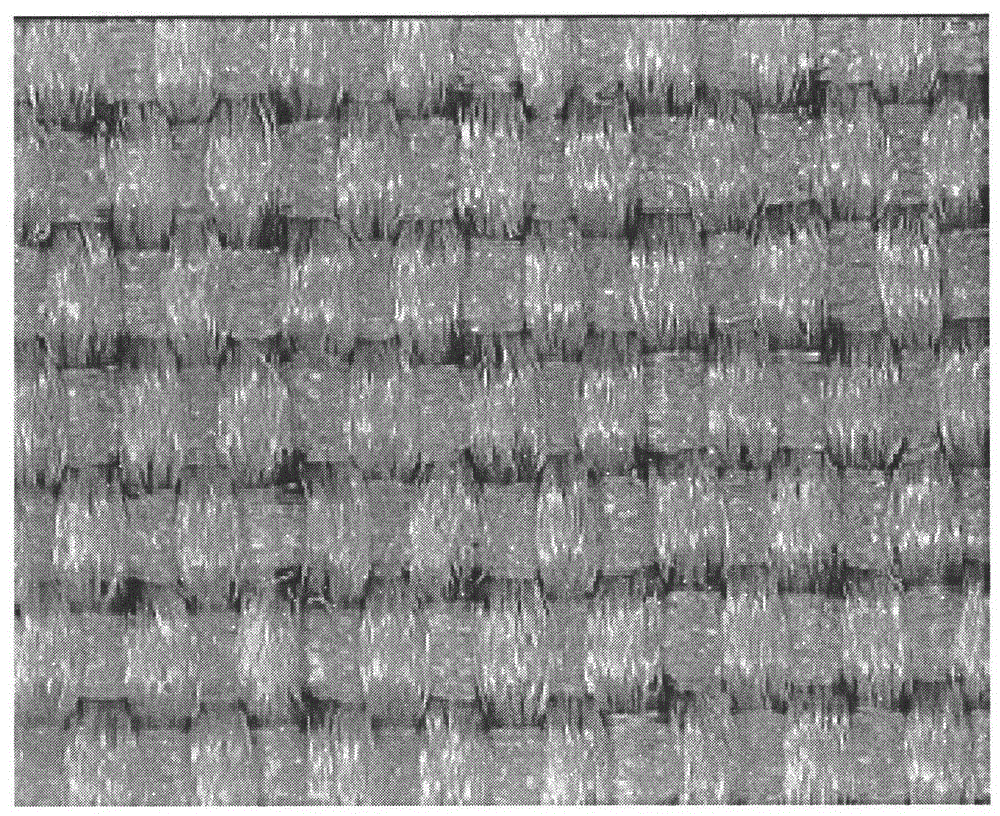Novel antibacterial textile fabric preparation method
A textile fabric, a new type of technology, applied in the field of textile processing, can solve the problems of self-decomposition products and volatiles harmful to human body, heat resistance, poor stability, unsuitable for high-temperature processing, etc., to achieve industrial production, low cost, and strong adhesion high degree of effect
- Summary
- Abstract
- Description
- Claims
- Application Information
AI Technical Summary
Problems solved by technology
Method used
Image
Examples
Embodiment 1
[0019] (1) Cleaning: select polyester fabric, put the fabric base material into acetone solution, and wash it with an ultrasonic cleaner for 30 minutes to remove organic solvents, dust and other impurities on the surface of the fabric, then rinse it repeatedly with deionized water and put it in Dry in an oven at 45°C.
[0020] (2) Sputtering: Put the pretreated fabric substrate on the sample holder in the sputtering chamber, the distance between the target material and the fabric substrate is 60 mm; use a water cooling device to cool the substrate; pump the reaction chamber to the background Vacuum, and then rush into high-purity argon with a volume fraction of 99.999% as the sputtering gas; the specific sputtering process parameters are as follows: first, sputter the silver target, the sputtering power is 60W, and the sputtering time is 20min; then sputter TiO 2 Target, sputtering power is 100W, sputtering time is 30min; sputtering silver target and TiO 2 When using the targ...
Embodiment 2
[0022] (1) Cleaning: select polyester fabric, put the fabric base material in acetone solution, and wash it with an ultrasonic cleaner for 40 minutes to remove organic solvents, dust and other impurities on the surface of the fabric, then rinse it repeatedly with deionized water and put it in Dry in an oven at 45°C.
[0023] (2) Sputtering: Put the pretreated fabric substrate on the sample holder in the sputtering chamber, the distance between the target material and the fabric substrate is 80mm; use a water cooling device to cool the substrate; pump the reaction chamber to the background Vacuum, and then rush into high-purity argon with a volume fraction of 99.999% as the sputtering gas; the specific sputtering process parameters are as follows: first, sputter the silver target, the sputtering power is 40W, and the sputtering time is 10min; then sputter TiO 2 target, the sputtering power is 80W, and the sputtering time is 45min; the sputtering silver target and TiO 2 When us...
Embodiment 3
[0025] (1) Cleaning: Use polypropylene fabric, put the fabric base material into the acetone solution, and wash it with an ultrasonic cleaner for 30 minutes to remove organic solvents, dust and other impurities on the surface of the fabric, then rinse it repeatedly with deionized water and put it in Dry in an oven at 40°C.
[0026] (2) Sputtering: Put the pretreated fabric substrate on the sample holder in the sputtering chamber, the distance between the target material and the fabric substrate is 60 mm; use a water cooling device to cool the substrate; pump the reaction chamber to the background Vacuum, and then rush into high-purity argon with a volume fraction of 99.999% as the sputtering gas; the specific sputtering process parameters are as follows: first, sputter the silver target, the sputtering power is 80W, and the sputtering time is 30min; then sputter TiO 2 Target, sputtering power is 100W, sputtering time is 30min; sputtering silver target and TiO 2 When using the...
PUM
 Login to View More
Login to View More Abstract
Description
Claims
Application Information
 Login to View More
Login to View More - R&D
- Intellectual Property
- Life Sciences
- Materials
- Tech Scout
- Unparalleled Data Quality
- Higher Quality Content
- 60% Fewer Hallucinations
Browse by: Latest US Patents, China's latest patents, Technical Efficacy Thesaurus, Application Domain, Technology Topic, Popular Technical Reports.
© 2025 PatSnap. All rights reserved.Legal|Privacy policy|Modern Slavery Act Transparency Statement|Sitemap|About US| Contact US: help@patsnap.com

